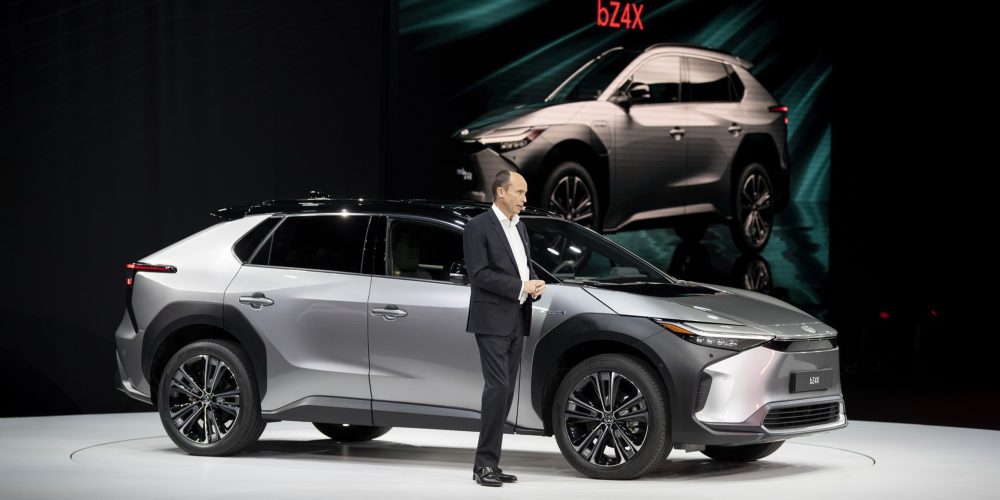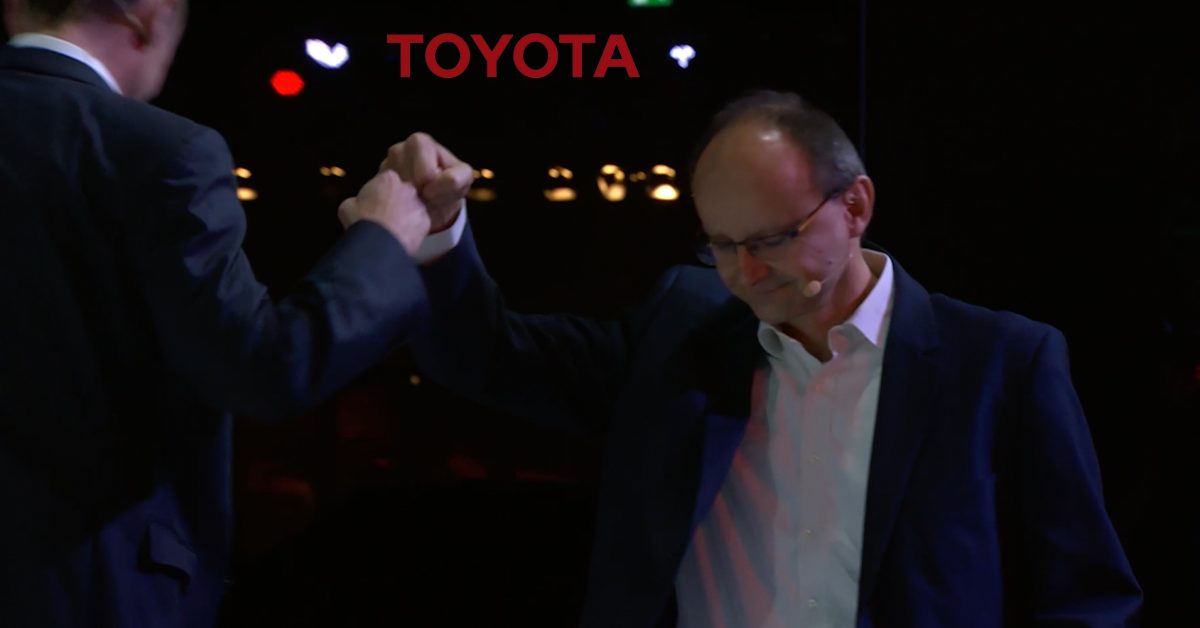During a recent media event in Brussels, Toyota Europe outlined a plan for a 100% CO2 reduction in all-new vehicle sales in the market by 2035. This “goal” will be preceded by a sales mix of at least 50% zero-emission vehicles (ZEVs) in Western Europe by 2030. On a broader scale, Toyota Motor Corporation continues to dig in its heels as one of the few major automakers that has yet to set an expiry for gasoline vehicle production.
Toyota is a name that needs no introduction. As one of the largest automakers on the planet with over 84 years of experience, the company has been around longer than most of Earth’s current population. An automotive elder, if you will.
By delivering models like the Corolla, Camry, and Supra, Toyota has long been established as a best-seller around the world, pushing automotive innovation with other vehicles like the RAV4 and Tundra.
Given its history of developing new autos, it’s no wonder that Toyota was an early promoter of electric vehicles, with its famed Prius. What is a wonder however, is why Toyota mostly abandoned carbon-friendlier vehicles since the Prius.
While Toyota remains a global best-seller of ICE vehicles, its EV report card remains abysmal, with plenty of “see me” notes from Mother Earth regarding its behavior. There’s almost too much evidence to choose from, so here’s a quick recap of some of its more newsworthy movements:
It’s not all bad, though. The brilliant minds behind the Yaris have in fact changed their tune (at least publicly) with their approach to EVs. This past October, Toyota unveiled its bZ4X as its first EV to arrive on its new dedicated platform, available for the global market (they previously manufactured some EVs for China, apart from some limited EV runs here and there).
In recent news, Toyota has also partnered with Chinese automaker BYD to build a $30,000 electric vehicle, but it’s not currently clear whether markets outside of China will see it. One of those potential markets is Europe, in which Toyota has now committed to implementing EVs… so it can remain authorized to sell cars there.


Toyota wants 50% ZEV sales in Europe by 2030, 100% in 2035
Toyota Motor Europe laid out its 14-year plan during its Kenshiki event yesterday. Kenshiki is Japanese for “insight.” As part of the strategy, Toyota is planning an increased rollout of ZEVs (BEV and Hydrogen Fuel Cell) throughout Western Europe.
Toyota execs in Europe stated that by 2030, the automaker’s ZEV sales mix is anticipated to be 50% minimum in its individual market. Furthermore, Toyota’s EV production capacity could also increase should “customer demand go even higher.” Matt Harrison, president & CEO of Toyota Motor Europe, spoke to the company’s carbon conscious goals overseas:
Moving beyond 2030, we expect to see further ZEV demand acceleration and Toyota will be ready to achieve 100% CO2 reduction in all new vehicles by 2035 in Western Europe, assuming that sufficient electric charging and hydrogen refueling infrastructures are in place by then, together with the renewable energy capacity increases that will be required.
Seems like an admirable goal, albeit a little slow. However, additional context of the EV outlook in Europe reveals that Toyota is simply doing the bare minimum to continue to sell vehicles in that market. As part of the European Green Deal this past July, the EU proposed an entire package of climate proposals, including reductions of new car emissions by 55% by 2030, and 100% by 2035. Sound familiar?
While the proposal has not been legally enacted yet, its odds are good, as most EU city residents support the combustion ban. Earlier this year, the International Energy Agency released a report outlining a path to net zero globally by 2050.
The report notes several steps that need to be taken, including a global halt to new fossil fuel projects this year. Additionally, new car sales must be 60% electric by 2030, and all new passenger car sales must be electric by 2035.
A number of nations signed an agreement to tackle these goals by at least 2040, following a recent meeting of the minds at COP26. Know whose signature wasn’t on that list? Volkswagen! Truthfully – and yes, Toyota was absent as well.
So Toyota has now committed to meeting these goals, but only in Europe… and only because the EU is about to require it. In the meantime, you can expect Toyota to push all its chips in on gasoline pickups and hybrids while it can still legally profit off them.
Electrek’s Take
It’s great that Toyota has made these commitments in Europe and that it is (finally) bringing (some) new EVs into the global market. It’s a segment that is seemingly destined to become the new normal for transportation.
That being said, a commitment to a goal that was essentially made mandatory by all the countries you hope to sell your vehicles in, with no mention of even striving toward an earlier deadline, feels forced. Because it is. Forgive me if I’m disinclined to hand out a gold star.
Toyota is in fact coming around on EVs, but at a sloth’s pace compared to the rest of the segment that appears to be innovating at a mile a minute. Simultaneously, the company is still pushing hard for hybrids and Hydrogen Fuel Cells. I truly doubt the Mirai will be around in 2030 when all infrastructure funding goes toward beefing up electrical grids.
Is Toyota simply standing in its own way due to stubbornness and hefty investments in less scalable technology? Or has it truly just become the bad guy in the EV world? It’s disheartening to see from such a prominent name in autos.
Let’s hope Toyota shapes up, but it seems like government policy as a threat to profits is the only language it understands. It must be deaf to our planet’s aching chest coughs of CO2 poisoning.
FTC: We use income earning auto affiliate links. More.
Subscribe to Electrek on YouTube for exclusive videos and subscribe to the podcast.
